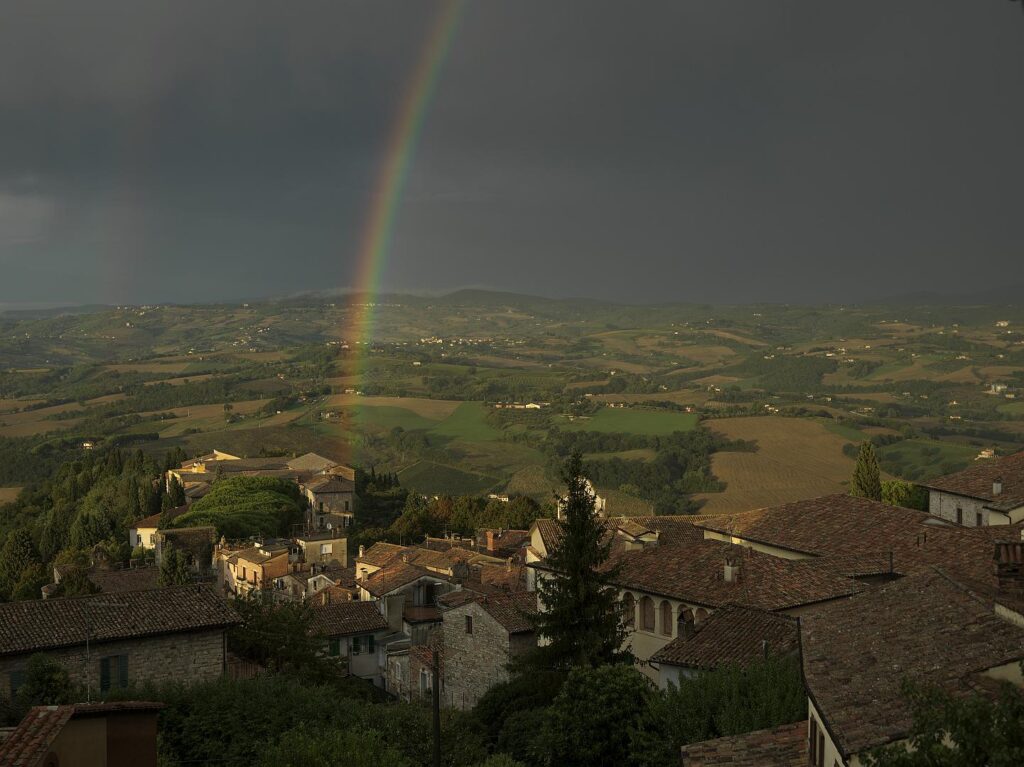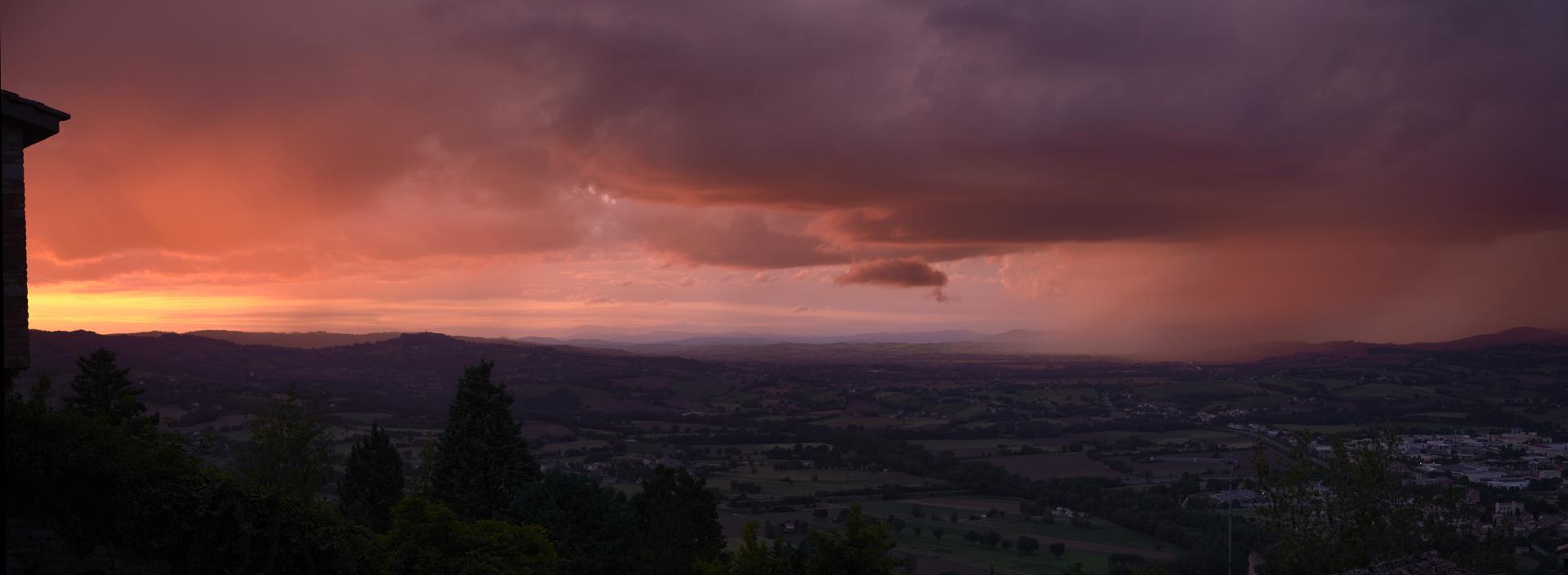What does a photographer do when the weather gods don’t smile? In the days when I took mainly landscape photographs, one answer to the question was “wait a while”. After all, one only needs the sun to shine for 1/60th of a second at f.16 with ISO 50 film. Over the years, my patient wife has spent long periods waiting in the car while I, having set up the camera on a tripod, squinted at the heavens, trying to gauge whether that bright spot on that hillside over there was likely to move my way.
It has been a while since I posted on photographic technique rather than Italian history, partly because I have so much historical material available, and partly because there is so much excellent photography on the internet that I feel a bit presumptuous offering my own thoughts. But it’s an excuse to publish a few photographs which would not otherwise be seen, so here we go, for what it is worth.
One landscape photographer I admire, David Noton, actually called one of his books “Waiting for the Light”, to make the point that having set everything up and composed the shot, you don’t have a good photograph unless and until the light cooperates.
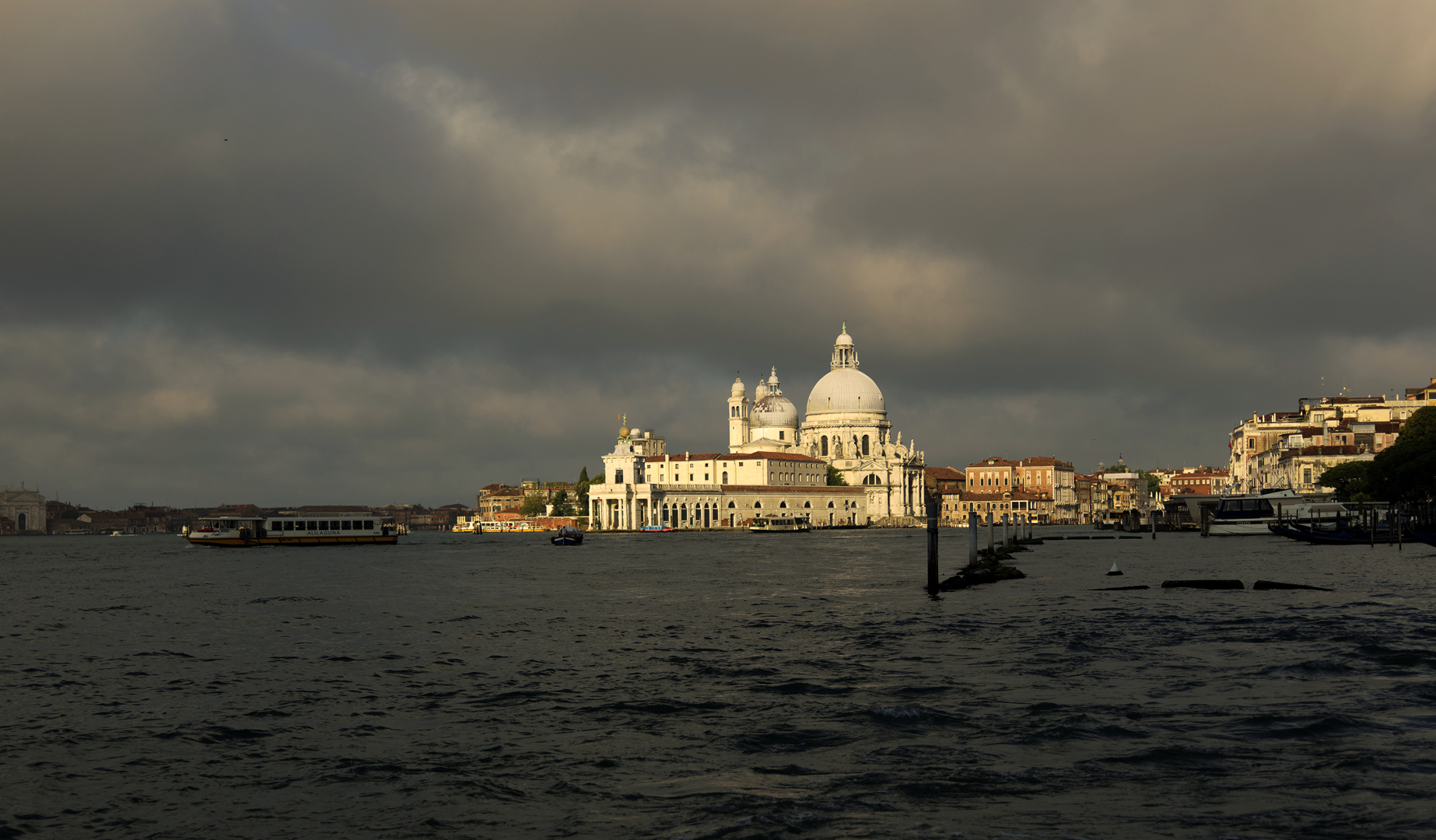
For the urban photographer, bad weather may not be all bad. Wet streets and puddles can add to the composition options, and a brief shower of rain can clear tourists out of a previously crowded scene. Duller light will reduce contrast which can be a good thing in towns.
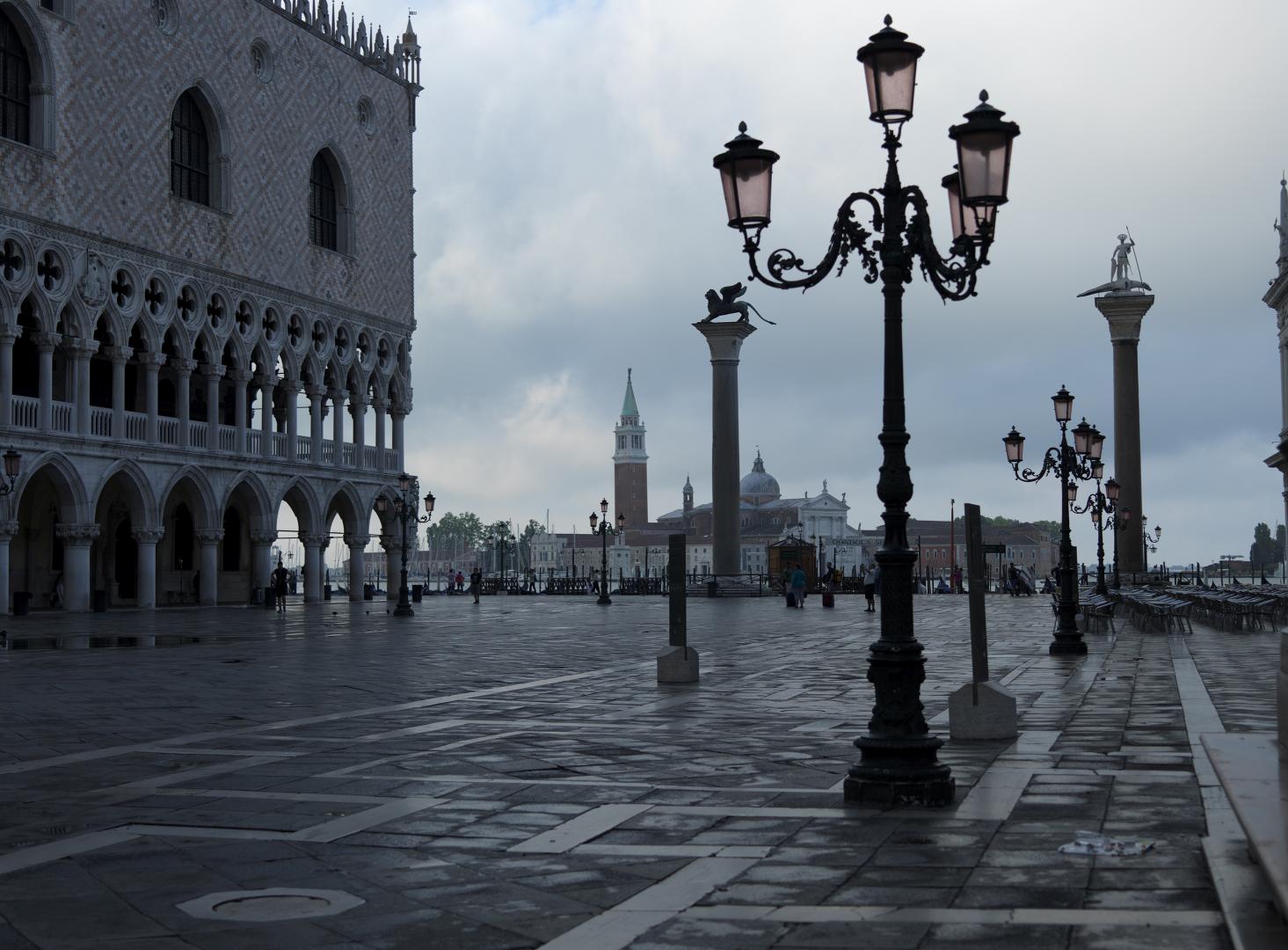
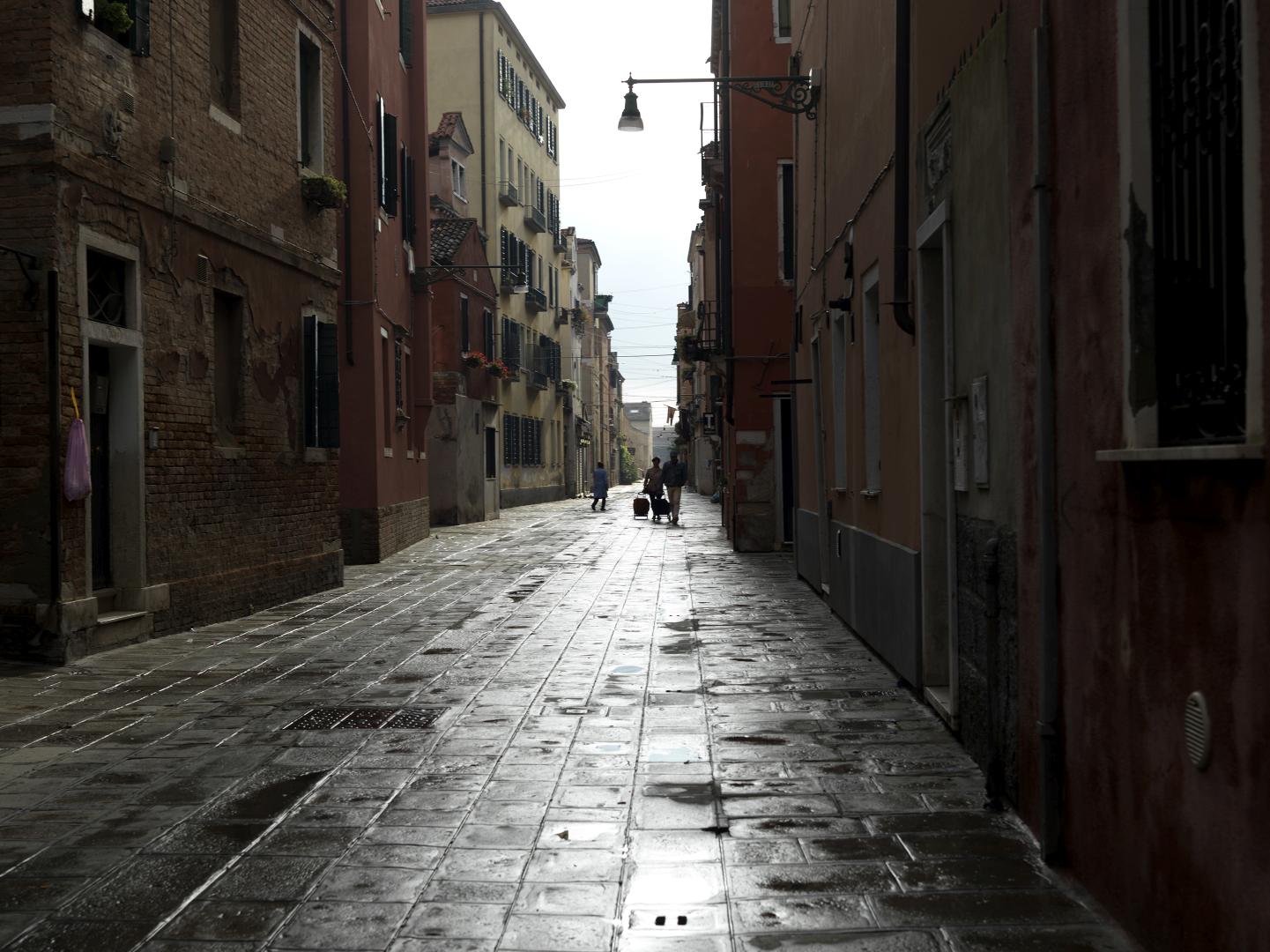
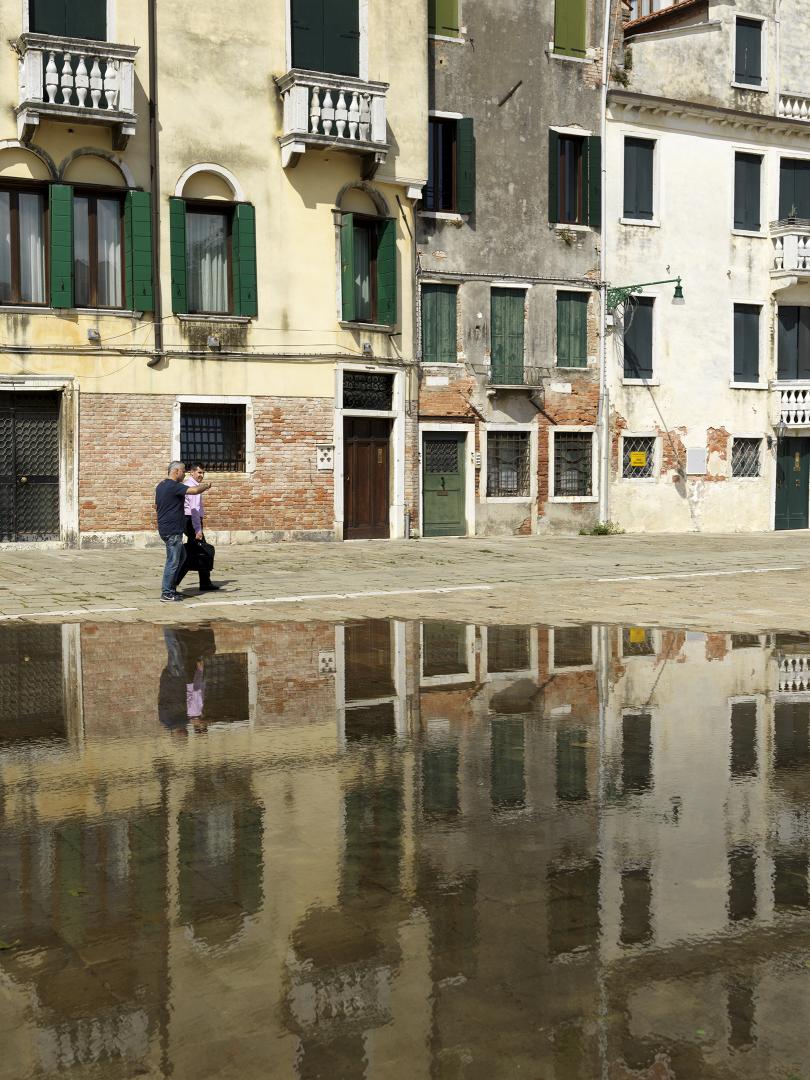
Sometimes bad weather makes the picture better. As I noted in my post on A Storm in the Val d’Orcia, the combination of a sunlit subject and a background of dark clouds can be very dramatic. Here is a repeat of one of the photographs from that post.
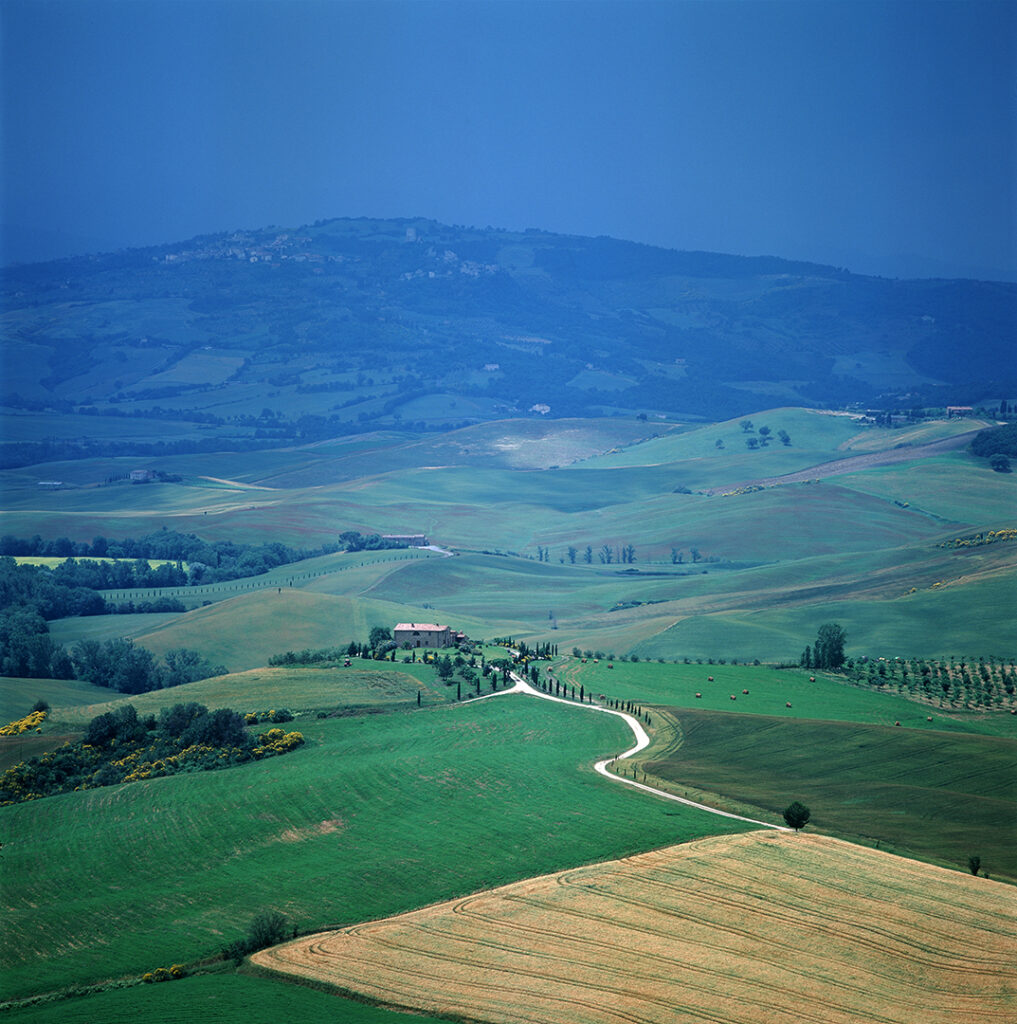
The picture below is of the town of Todi in Umbria, where the setting sun illuminated the town as a series of thunderstorms darkened the sky behind.
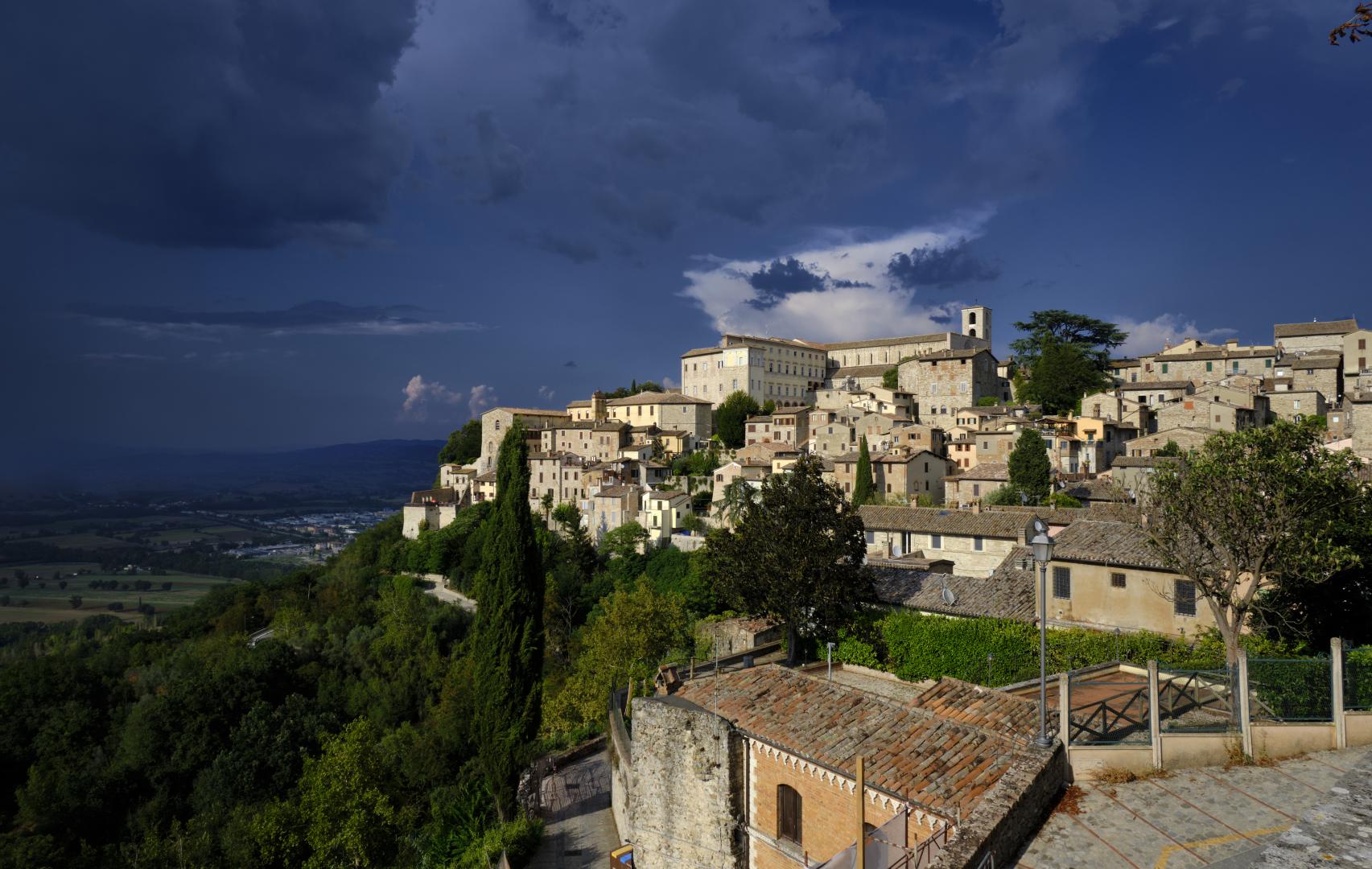
In the picture above, the combination of bright sunshine on the buildings and dark clouds behind was a bit challenging for the cameras’ metering, so I set the exposure compensation dial to underexpose by one stop. Cameras, whether film or digital, can’t cope with the same dynamic range as the human eye, and so they need to make compromises by averaging things out. In the photograph above, the camera’s default metering would have made the whole picture lighter, with the sky losing drama and the buildings overexposed. When processing the image I used Capture One’s Velvia film emulation to retain the saturated colours produced by the light conditions.
As it happens, one of the first pictures I ever took of Todi, on a visit in 1999, was during a thunderstorm too. And that was using real Velvia film.
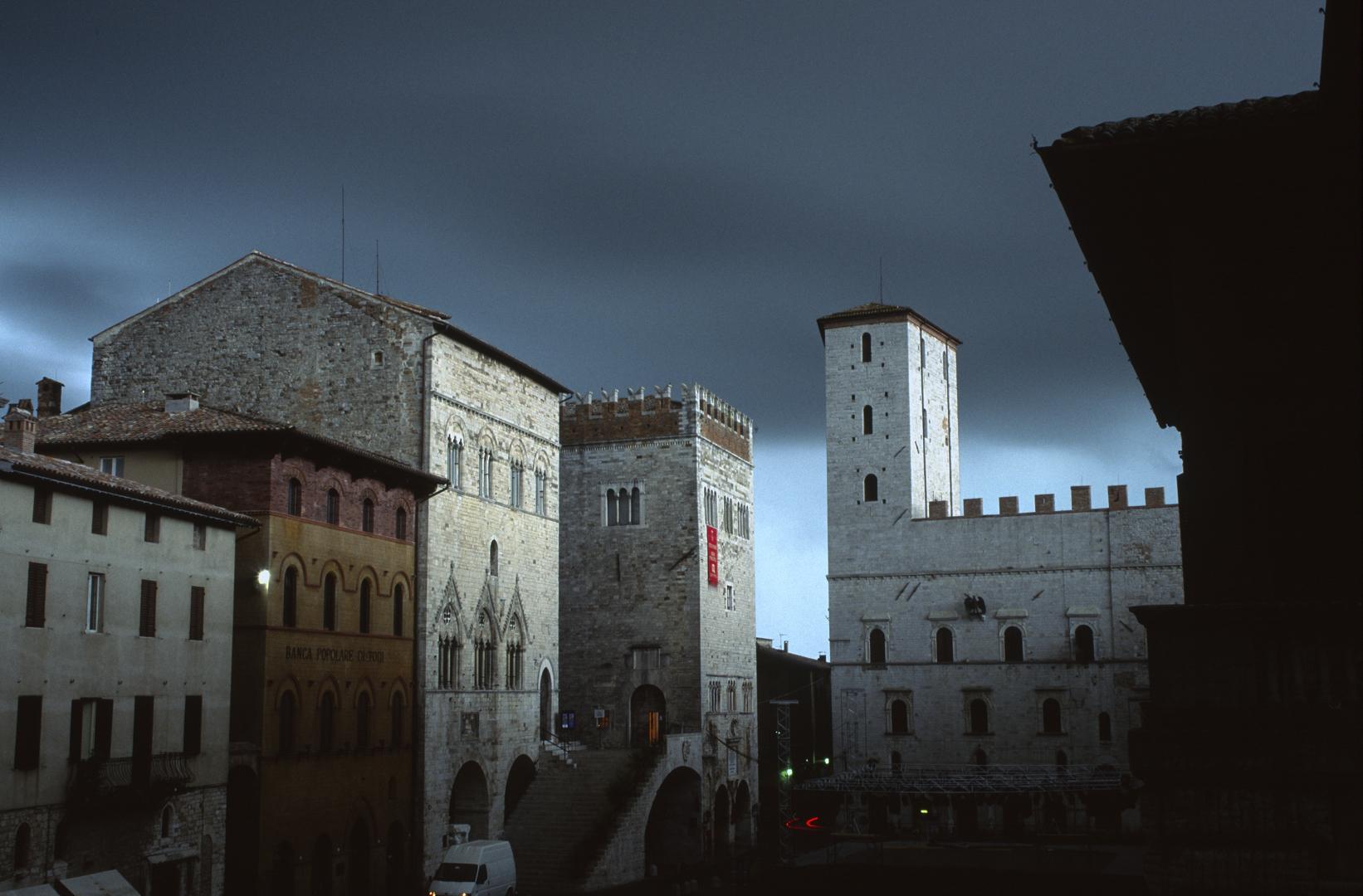
When using manual film cameras like my old Hasselblad or Horseman 45, I would use a hand-held meter to take a spot reading from the clouds, and then typically underexpose by 1-2 stops to ensure that the clouds appeared as dark in the photograph as they were in real life. If I had time I might also use a graduated neutral density filter to reduce the amount of light in the sky so that film would “see” it closer to how the human eye would. But time is key: the light might only be at its best for a few seconds.
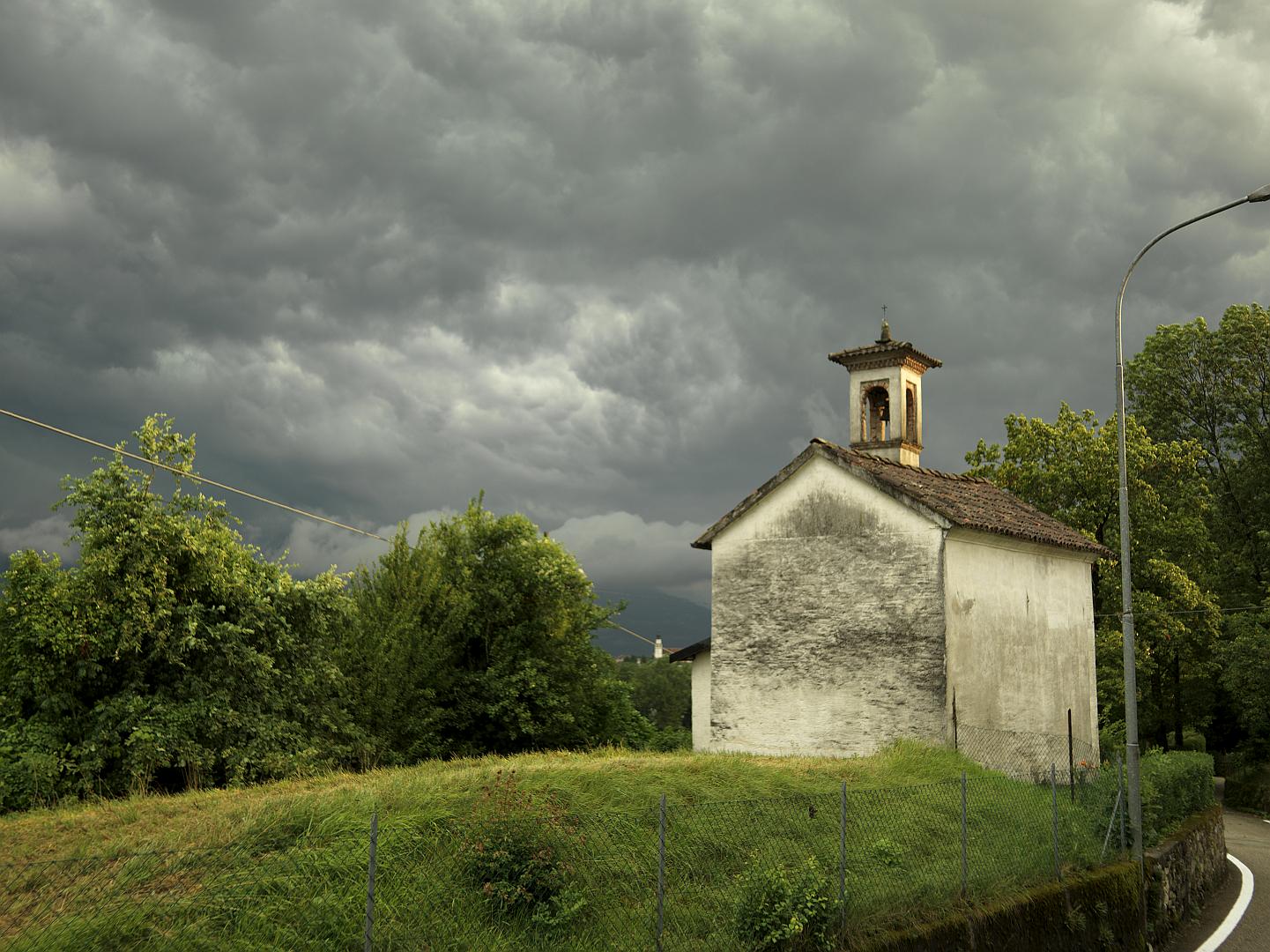
Of course one of the best things is when the weather itself becomes the subject, rather than the background, of the photograph. In these circumstances, too, it is important to understand how the light meter (hand-held or in-camera) is responding to the scene, and to make adjustments where necessary.
In central Italy, around the spring and autumn equinoxes, storms are common. The humidity builds, then clouds start to form, and before long they are rising thousands of feet into the air. Evening is a good time to photograph them, when the tops of the clouds are still catching the sun, while the lower parts are in evening light. In the photograph below, taken looking north in the Middle Tiber Valley, just such a thunderstorm is emptying a fair bit of rain over Perugia.
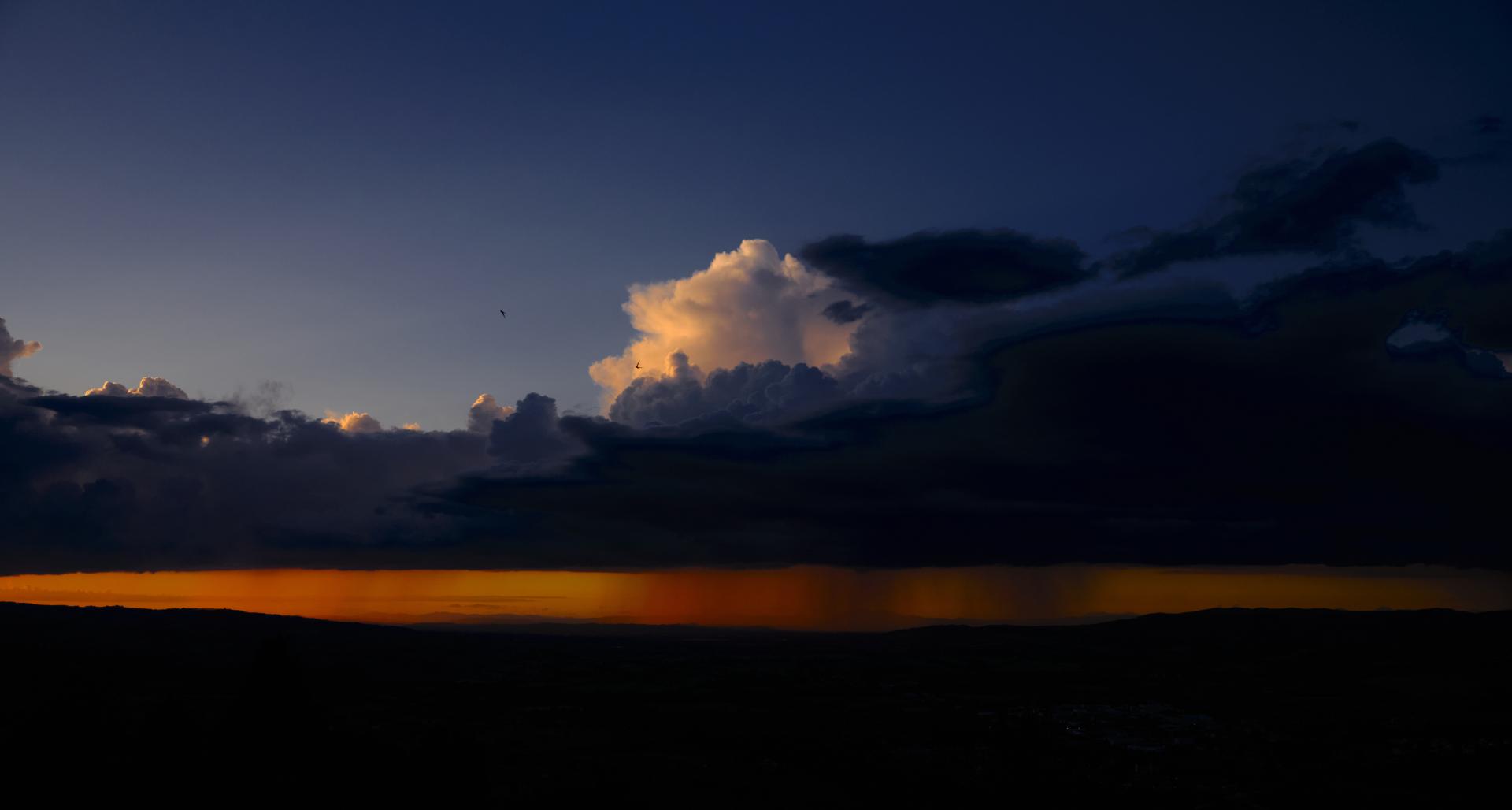
For this photograph, knowing that the camera’s meter would overexpose, I dialled in a minus 2 on the exposure compensation dial. One of the things I like about my two Fujifilm cameras is the analogue-style dials, in particular the exposure compensation dial under the right thumb, so I can make adjustments without taking the camera down from my eye.
Cloudscapes can benefit from zooming in to find detail, or zooming out to capture all the variation in lighting. In the photograph below, I used a wide angle lens to pull in a large area of the sky, and a large storm cloud that was being illuminated by the setting sun.
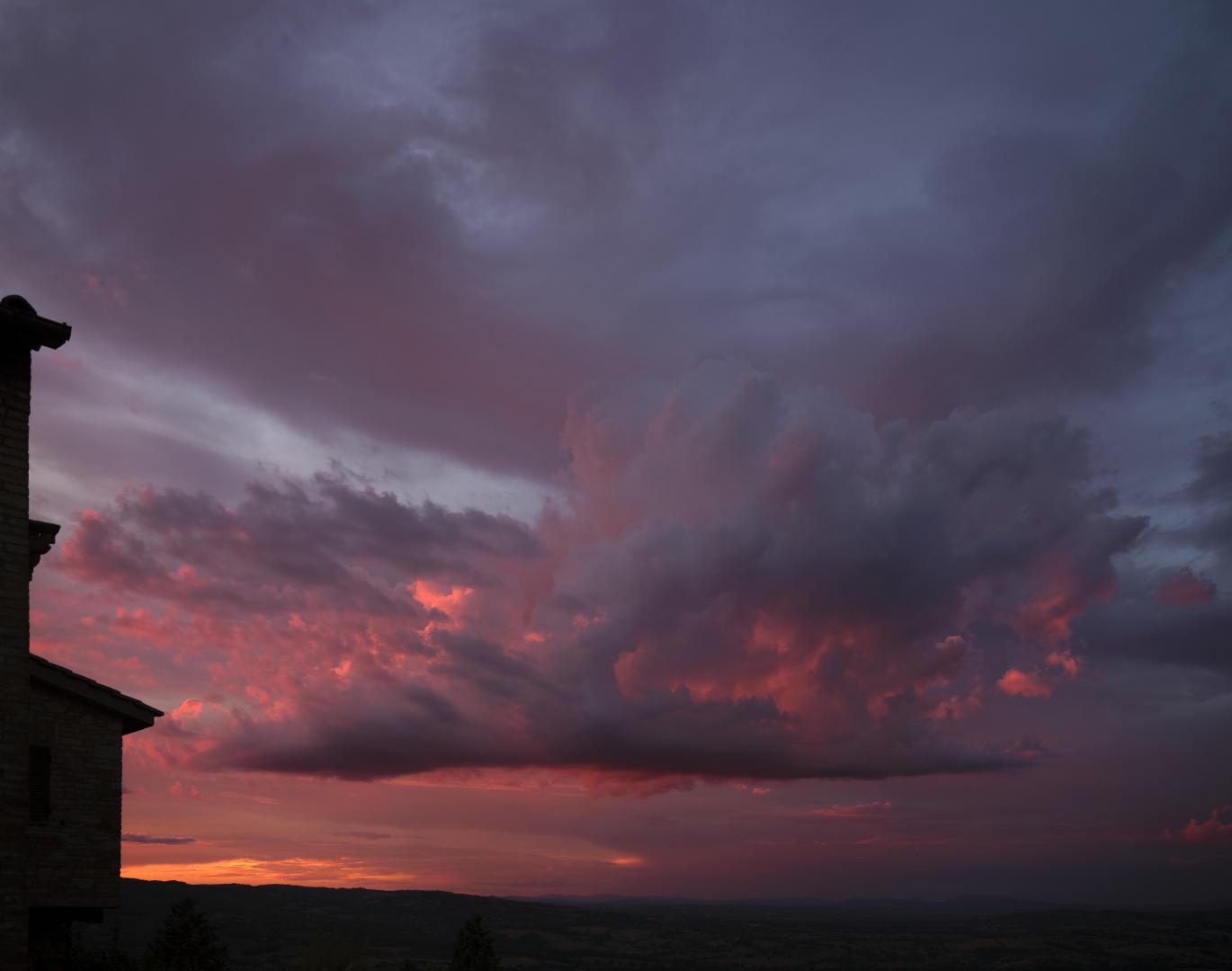
Overnight storms don’t offer much – apart from lightning shots, which will be the subject of a separate post if I ever get enough good ones. But the mornings after storms can provide beautiful misty landscapes.
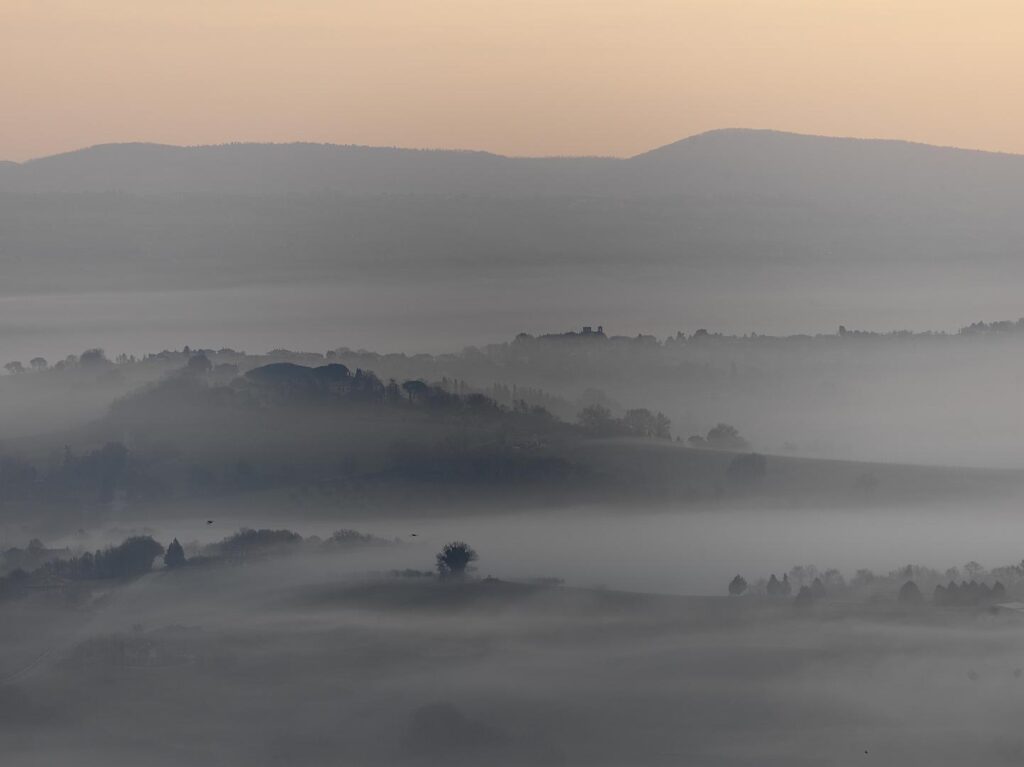
And of course there is the ancient promise after rain, in the form of the rainbow. From the photographer’s point of view, the best accessory to have at hand when photographing a rainbow is a polarising filter, which will really bring out the colours. You can – kind of – achieve a similar effect in digital post-processing, but it is a lot more work.
